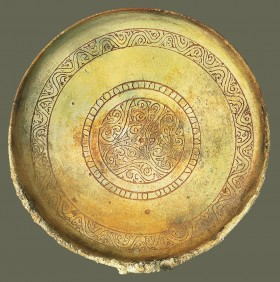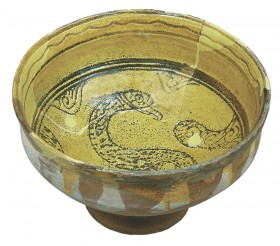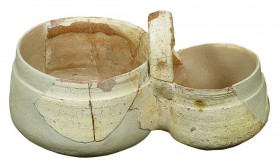ÉÉ.7. Aspects of public and private life
Everyday life is an especially important area in the study of Byzantine culture, but one which has not been sufficiently pursued since scholars’ interest is so often drawn to the glittering works of Byzantine religious art. The objects that served routine needs are by and large made of “humble” materials such as clay, glass or bronze, but represent, nonetheless, significant evidence for everyday life in Byzantium. Indeed, many aspects of this everyday life continued in one form or another into modern Greek society.
The overwhelming majority of the empire’s population lived in the countryside, which served as the basis for economic and social organization. An urbanized economy grew up in cities, some of which were distinguished as administrative, military, commercial centers, or hubs for transport and communication. Trade by both land and sea also developed, as well as industry and crafts, such as the production of textiles and pottery, sculpture, carving, and metallurgy.
-

Fragment of a slab with a centaur and a dancing girl
BXM: 001118
Exhibition room: II.7 Aspects of public and private life
details -

Gospels (ff. 194v-195r)
BXM: 001134
Exhibition room: II.7 Aspects of public and private life
details -

Ceramic tripod stilts
BXM: 001233
Exhibition room: II.7 Aspects of public and private life
details -

Glazed ceramic plate
BXM: 001253
Exhibition room: II.7 Aspects of public and private life
details -

Glazed ceramic bowl
BXM: 001294
Exhibition room: II.7 Aspects of public and private life
details -

Glazed ceramic bowl with a low base
BXM: 001307
Exhibition room: II.7 Aspects of public and private life
details -

Clay jug
BXM: 001318
Exhibition room: II.7 Aspects of public and private life
details -

Chafing dish (saltsario)
BXM: 001321
Exhibition room: II.7 Aspects of public and private life
details -

Glazed clay vessel for condiments.
BXM: 001342
Exhibition room: II.7 Aspects of public and private life
details








